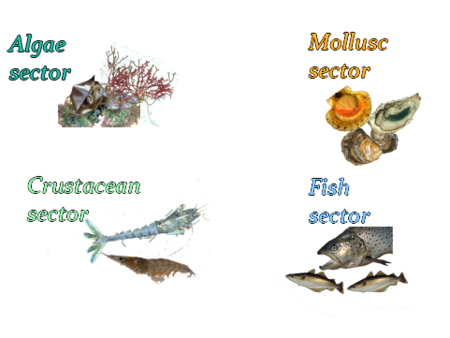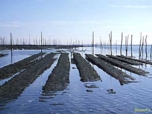Molluscan Shellfish farming
Mollusc aquaculture principally involves shellfish farming. The French term ‘conchyliculture’ is recent, dating from the mid 20th century.
This is a form of marine aquaculture, apart from fresh water mussels (raw material for nuclei of pearls), and is also a form of subsistence aquaculture in Asia. Groups of species reared include: Ostreidae (oysters), Mytilidae (mussels), Pectinidae (scallops), and Veneridae (clams).
The industry is closely tied to biological cycle of the cultivated species: in most molluscs, the supply of juveniles relies on natural settlement. At the stage when larvae metamorphose they develop a need to settle onto a substrate. Putting out specialised collectors provides the larvae with a suitable substrate for settlement, and thus captures the young shellfish for growers to rear. This young shellfish “spat” will then be put in/on growing structures adapted to the species (e.g. oysters in mesh bags) or sown on ground plots. Hatcheries are another sources of shellfish spat, as controlled reproduction is possible with some species.
Cultivated mollusc species are either grazing gastropods or filter-feeding bivalves. For the latter, food is supplied in the natural environment by the first level of the food chain, the phytoplankton.
Another form of shellfish farming exists that does not aim to produce protein but another type of product; this is pearl oyster farming. Finally, a new kind of culture that is developing is that of decorative shellfish (tridacna or ‘giant’ clams), which are used to decorate aquariums when alive and whose shells are collector’s objects when the animals are dead.


